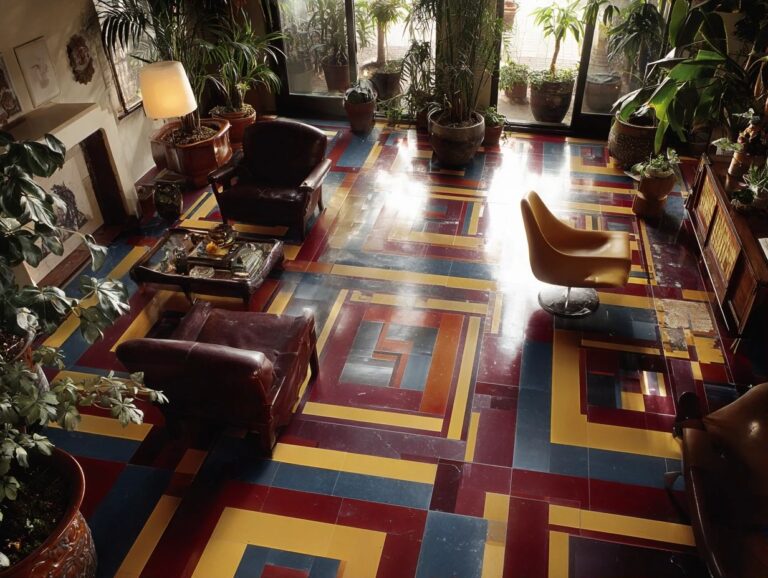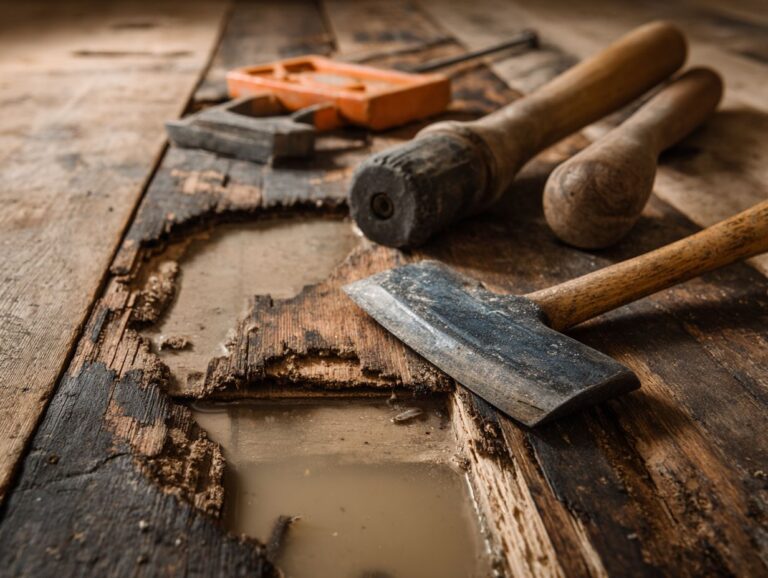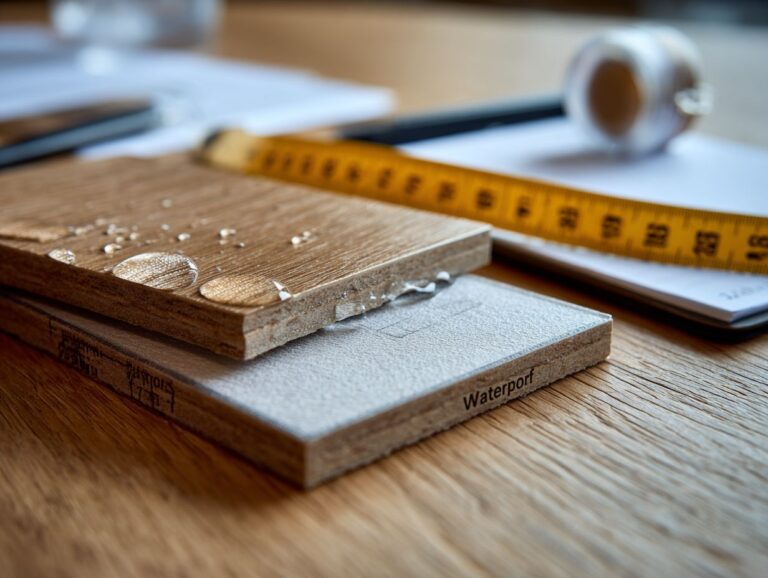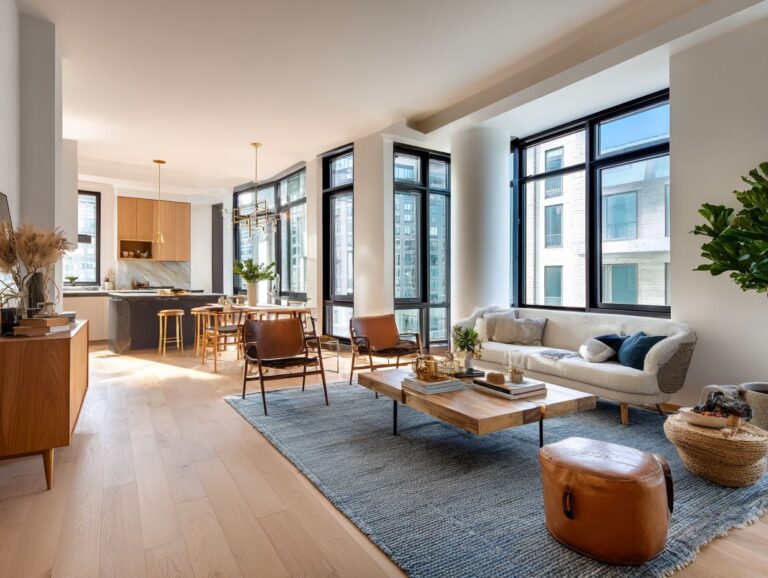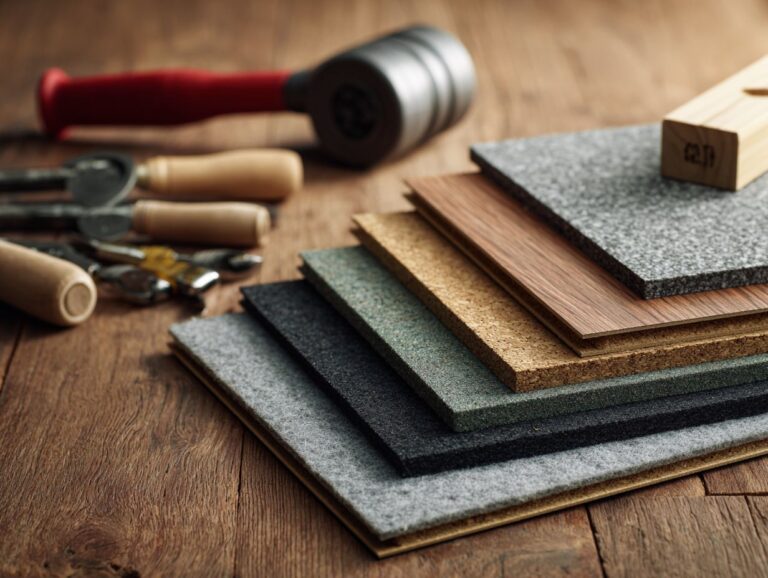Slip-Resistant Flooring for Seniors – Safety First
For the safest flooring for older adults, choose slip-resistant types to help prevent falls. With organizations like the CDC pointing out the risks of slipping, picking soft materials such as rubber flooring can greatly improve comfort and safety at home. Avalon Flooring offers a range of solutions designed specifically for seniors. This article will look at different slip-resistant flooring options and their benefits, providing safety for you and your family.
Key Takeaways:
Contents
- Senior Flooring Safety Statistics
- Types of Slip-Resistant Flooring
- Benefits of Slip-Resistant Flooring
- Factors to Consider When Choosing Flooring
- Installation and Maintenance Tips
- Frequently Asked Questions
- What is the importance of slip-resistant flooring for seniors?
- What types of flooring are considered slip-resistant for seniors?
- Is slip-resistant flooring only suitable for seniors or can it benefit all age groups?
- Are there any maintenance or special care requirements for slip-resistant flooring?
- Can I mix and match slip-resistant flooring with my existing flooring?
- Is slip-resistant flooring expensive compared to traditional flooring options?
Importance of Flooring for Seniors
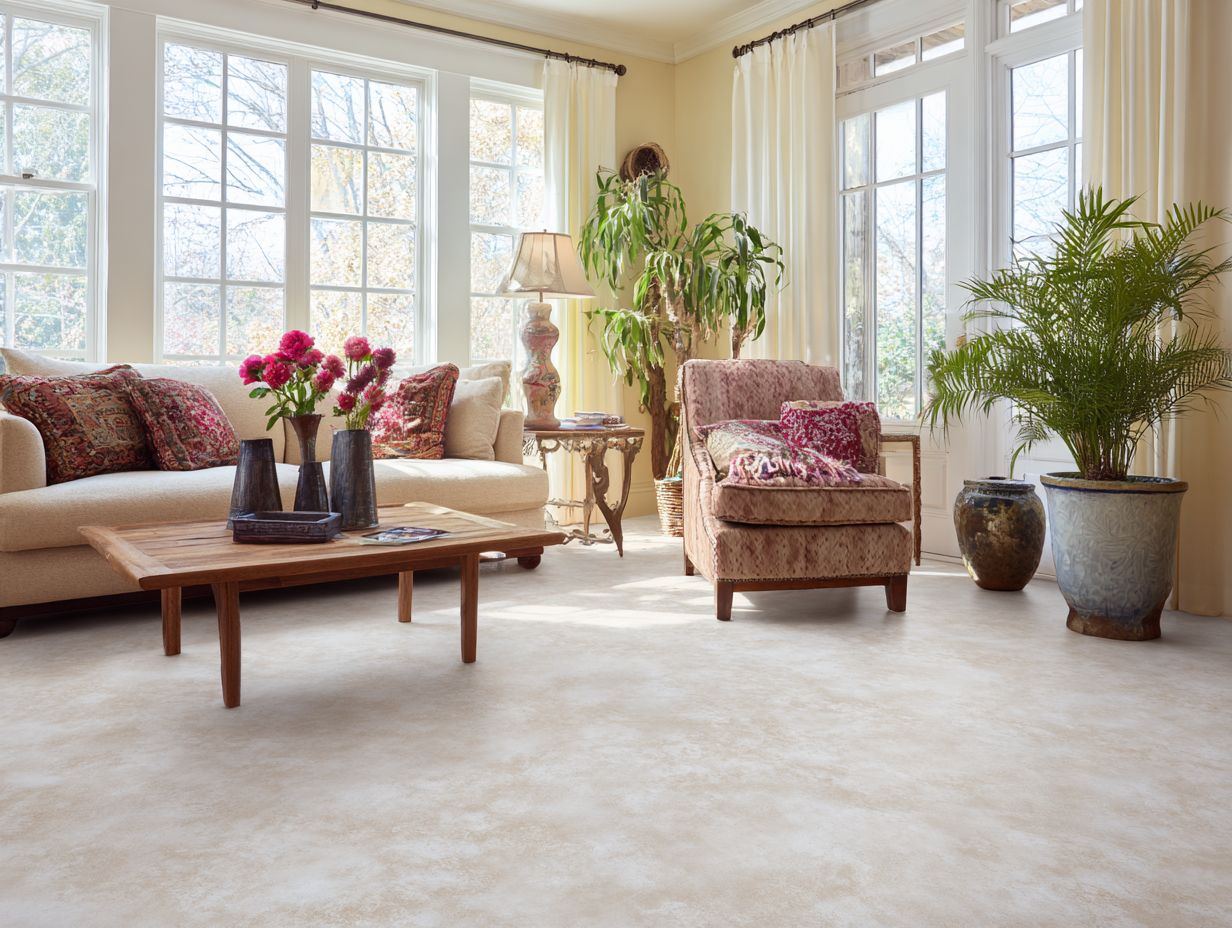
Picking the right flooring for older adults is important because falls often cause injuries, so safety should be the main focus in home improvement projects.
According to the CDC, one in four older adults experiences a fall each year, underscoring the importance of fall prevention measures.
Opt for materials such as vinyl, cork, or rubber flooring, which provide superior traction and cushioning. Cork flooring feels soft to walk on and doesn’t easily cause slipping, which makes it a great option for living spaces.
Think about using area rugs with non-slip backing to make the space safer. Putting up grab bars and using different colors to distinguish floor types can help older people move around more safely.
Senior Flooring Safety Statistics
Senior Flooring Safety Statistics
Injury Statistics: Fall Injury Rates
Injury Statistics: Hip Fracture Rates per 1000 Falls
Injury Statistics: Annual Fall-Related Injury Estimates
Injury Statistics: Injury Details by Age Group
The Senior Flooring Safety Statistics Show important information about injuries from falls in older people, focusing on how different flooring materials and age groups affect these injuries. This data offers useful information for creating safer spaces for older adults, especially in nursing homes and hospitals.
Injury Statistics highlight that injurious falls occur more frequently on rigid floors compared to shock-absorbing floors. In care homes, the rate of injurious falls on rigid floors is 33%, compared to 26.4% on shock-absorbing floors. Hospitals exhibit a similar pattern, with 42.4% of falls on rigid floors versus 27.1% on shock-absorbing floors. These statistics suggest that flooring choices can significantly impact fall injury rates, with shock-absorbing floors reducing the risk of injury.
- Hip Fracture Rates: The rate of hip fractures per 1000 falls is markedly higher on concrete subfloors (30) compared to wooden subfloors (18). This shows why it’s important to choose flooring that reduces the risk of serious injuries.
- Annual Fall-Related Injury Estimates: There are 37,991 annual fall-related injuries on carpets and rugs, with 54.2% occurring on carpets and 45.8% on rugs. Additionally, a significant 72.8% of falls occur at home, with 27.9% resulting in head/neck injuries. These findings show the need for better home safety measures.
- Injury Details by Age Group: Individuals aged 75-84 account for 42.5% of fall-related injuries, followed by those aged 85 and older (33.9%), and 65-74 (23.6%). This data emphasizes the increased risk of falls as people age, highlighting the necessity for targeted interventions for older adults.
In summary, the Senior Flooring Safety Statistics reveal significant correlations between flooring types and fall-related injuries. By choosing safer flooring and specific safety precautions for older adults, especially at home, healthcare providers and caregivers can lower the number and seriousness of falls in seniors. This information is important for policymakers and designers who want to build safer places for older people.
Overview of Slip-Resistant Options
There are different types of flooring that help prevent slipping. Each type provides specific advantages like being long-lasting and easy to care for, which are important for places where older adults live.
Common categories of slip-resistant flooring include:
- Vinyl
- Tile
- Rubber
Vinyl flooring, often used in kitchen and bathroom environments, offers a low-maintenance surface that is easy to clean. Tile, especially textured varieties, provides a formal look with excellent durability but requires proper grout maintenance. Rubber flooring, soft and cushioned, is popular in common areas for its shock absorption and comfort.
In the next parts, we will look closely at these specific types, examining how they are installed and which places they work best in.
Types of Slip-Resistant Flooring
Examining various types of slip-resistant flooring reveals many choices created to increase safety and comfort in homes for seniors. For an extensive analysis of this topic, our Bathroom Flooring Guide delves into waterproof and slip-resistant options that are ideal for enhancing senior home safety.
Vinyl Flooring
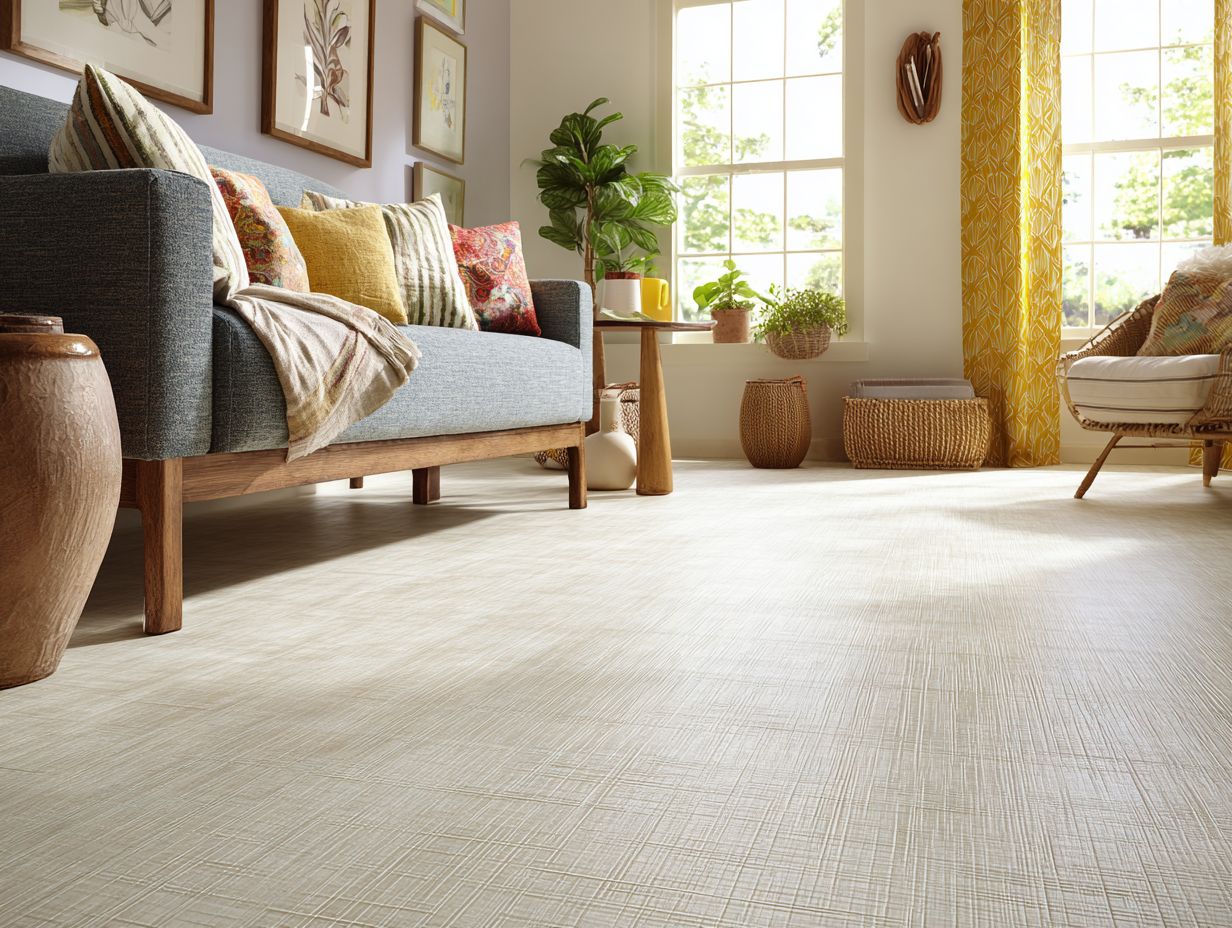
Vinyl flooring, especially high-quality vinyl, provides options that reduce slipping with surfaces that improve grip, making it a great choice for homes with older adults.
This textured surface significantly reduces the risk of slips compared to smooth flooring.
Cleaning is easy-most spills can be wiped off with a wet cloth and gentle soap. Textured vinyl usually costs between $2 and $5 per square foot, offering a budget-friendly improvement.
Brands like Armstrong and Mannington offer high-quality choices that are both long-lasting and look good.
Consider selecting a product with a high wear layer for added longevity, especially in high-traffic areas.
Ceramic and Porcelain Tiles
Ceramic and porcelain tiles are renowned for their durability and aesthetic appeal while offering slip-resistant surfaces for safety in senior environments.
Different finishes can improve slip resistance, like textured, matte, and honed surfaces.
Textured finishes, often found in brands like Daltile and Mohawk, are particularly effective, increasing traction without compromising style. Pricing for these tiles typically ranges from $1 to $10 per square foot, depending on the finish and design.
For instance, a popular Daltile option offers a matte finish that is both safe and stylish, ideal for senior living spaces. Concurrently, Mohawk’s polished finish offers great slip resistance while keeping an attractive appearance.
Carpet and Area Rugs
Low-pile carpeting and non-slip area rugs can significantly reduce slip risks while adding comfort and warmth to senior spaces.
Picking carpets with short fibers helps seniors move around more easily and reduces the risk of tripping.
To maximize safety, consider non-slip rug pads, which provide added grip and prevent movement.
For budget considerations, low-pile carpets typically range from $2 to $5 per square foot. Brands like Shaw offer durable options, while Mohawk specializes in stain-resistant materials, ideal for active environments.
When choosing, pick a pile height under half an inch to make moving around easy and create a comfortable feel.
Laminate Flooring
Laminate flooring combines style and durability while offering slip-resistant options suitable for areas frequented by seniors.
Setting it up is easy, needing just a few tools like a saw, spacers, and a tapping block, which helps to keep expenses low.
The price is also budget-friendly, typically ranging from $1 to $3 per square foot.
Brands such as Pergo and Quick-Step are well-regarded for their quality and variety. Pergo offers a range of finishes, while Quick-Step is known for its easy snap-lock installation.
These brands are perfect for DIY fans wanting to improve their homes without needing much skill or spending a lot of money.
Natural Stone Flooring
Natural stone flooring is a stylish and non-slip option that improves the look and keeps people safe in senior care facilities.
Granite and slate are particularly popular for their unique textures. Granite has a speckled surface that is durable and its dense texture helps prevent slips. Slate has a rough surface that helps with grip and looks appealing.
Pricing typically ranges from $5 to $20 per square foot, influenced by the stone’s quality and sourcing. Reputable suppliers such as MSI and Arizona Tile offer a range of options, allowing facilities to find the right balance of aesthetics and safety without exceeding budget constraints.
Benefits of Slip-Resistant Flooring
The main benefits of slip-resistant flooring are better safety, lower chance of falling, increased comfort, and simple upkeep, which are important for older adults.
Enhanced Safety
Slip-resistant flooring improves safety by reducing the risk of accidents, creating a safer home for older adults.
For instance, a study showed that senior care facilities implementing slip-resistant flooring reduced slip-and-fall incidents by up to 60%. Materials like vinyl with textured surfaces and rubber flooring improve grip and offer cushioning in case of falls.
Facilities using products from brands like Roppe or Altro have reported markedly fewer injuries. Regular upkeep of these floors makes sure they continue to be non-slip, keeping residents safe and reassuring their families.
Reduced Risk of Falls
Implementing slip-resistant flooring has been shown to reduce the risk of falls by up to 50% in senior living spaces, a critical improvement.
Research shows that some flooring, like textured vinyl and rubber materials, greatly improve safety. For instance, studies indicate that textured vinyl can reduce slip occurrences by 30%, while rubber floors provide excellent traction and cushioning.
Natural materials like cork also offer a safer alternative, combining aesthetics with functionality. When picking flooring, think about the texture and strength of the material to make sure it’s safe and comfortable for people living there over time.
Prioritizing these features can lead to substantial improvements in fall prevention strategies.
Improved Comfort
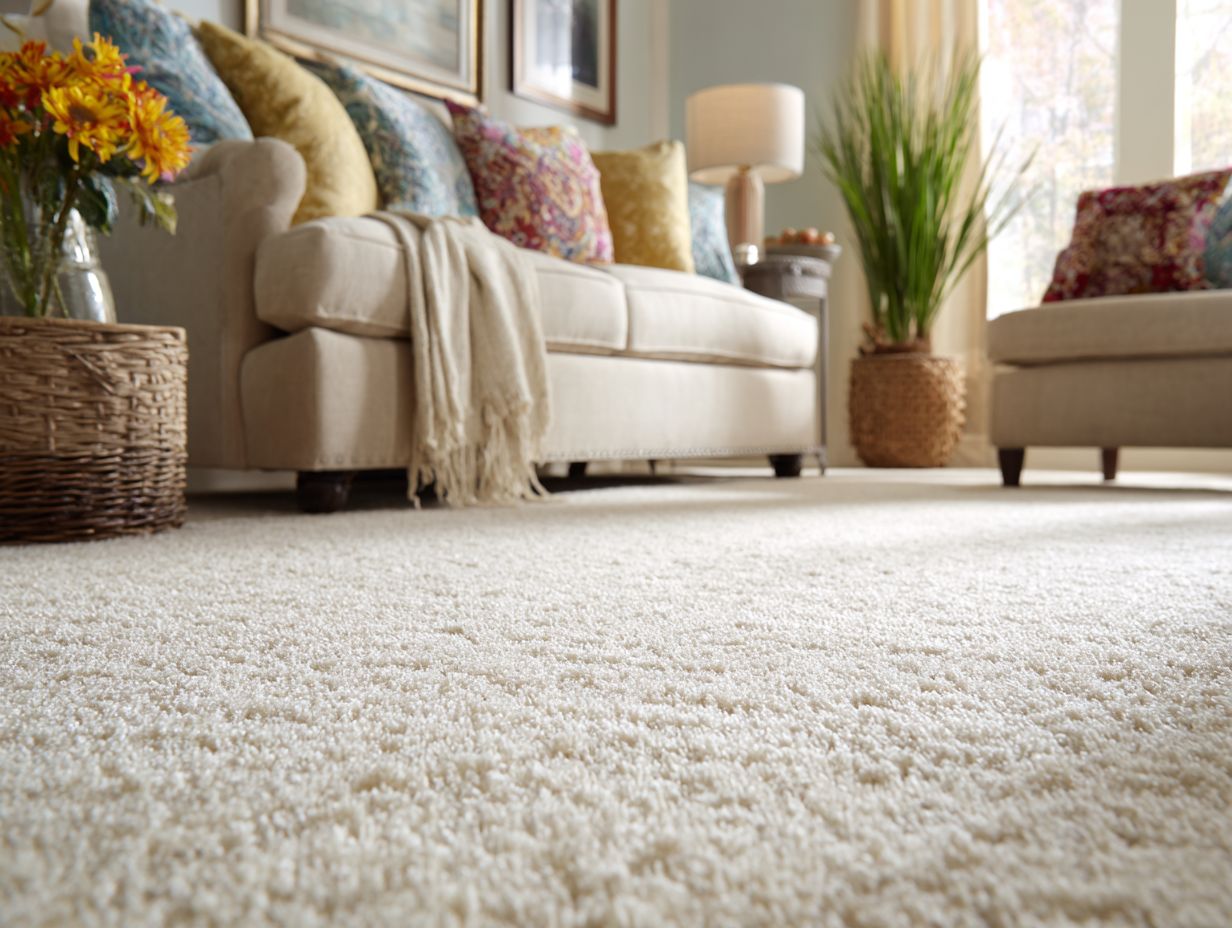
Slip-resistant flooring materials offer comfort and are important for seniors who use mobility aids.
Cork and rubber flooring stand out as excellent choices. Cork cushioning absorbs impact, reducing strain on joints, while its natural texture gives better grip.
Rubber flooring is commonly found in gyms because it does not easily become slippery and lasts a long time. This makes it a good choice for homes where spills are frequent. Both materials are also easy to clean, which is essential for maintaining a safe environment.
When selecting flooring, consider options that combine comfort with these ergonomic benefits, ensuring an inviting and secure living space for seniors.
Easy Maintenance
Most slip-resistant flooring options are low-maintenance, allowing caregivers to focus on their loved ones rather than constant upkeep.
To maintain slip-resistant floors, specific care routines are essential.
- For vinyl, clean weekly with a mild soap solution;
- For tile, use a pH-neutral cleaner monthly to prevent buildup.
- Hardwood floors should be dusted regularly every few days and cleaned with a wood cleaner every 2-3 months.
- For carpets, get a vacuum with a HEPA filter and clean them well every 6 to 12 months.
Creating these habits helps maintain the floor’s condition and makes it safer by removing potential dangers from the surface.
Factors to Consider When Choosing Flooring
When choosing slip-resistant flooring, you need to think about texture, how well it handles moisture, how long it lasts, and the price.
Texture and Finish
The texture and finish of flooring are important for slip resistance, with rougher surfaces providing better grip.
Porcelain tiles with a textured surface offer better traction, making them ideal for kitchens and bathrooms.
Products like ‘Daltile’s RevoTile’ feature a slip-resistant surface, which is tested for safety. Similarly, rubber flooring options, such as ‘Roppe’s rubber tile’, provide an excellent non-slip characteristic while being comfortable underfoot.
Installing these surfaces in high-traffic areas can significantly reduce the risk of slips, particularly in homes with children or elderly residents. Always consider the level of foot traffic and intended use when selecting flooring materials.
Moisture Resistance
It is important for flooring to resist moisture to stop slipping caused by wet floors, particularly in bathrooms and kitchens.
Vinyl and ceramic tiles are excellent choices due to their superior moisture resistance.
Vinyl flooring, particularly luxury vinyl tile (LVT), is waterproof and works well in homes and businesses, making it practical for a variety of locations.
Ceramic tiles are water-resistant and can be certified for use in wet areas (check for ANSI A137.1 certification). Sealing grout lines makes ceramic tiles more durable and safer.
These options provide both functionality and aesthetic appeal, fitting well in moisture-prone areas.
Durability and Longevity
Picking strong flooring means it lasts longer and you won’t have to change it often, which is helpful in places where many people walk.
Vinyl flooring often has a lifespan of 10-20 years, which makes it a cost-effective option for homeowners. Hardwood, on the other hand, can last over 30 years if maintained properly, often coming with warranties of 25 years or more.
Laminate offers a middle ground, with a lifespan of about 15-25 years, ideally suited for families. When selecting flooring, consider both the lifespan and warranty to gauge overall value. A longer warranty often reflects manufacturer confidence in their product’s durability.
Cost Considerations
Knowing the costs of various slip-resistant flooring options helps choose the right one for your budget.
Vinyl flooring typically costs between $2 to $5 per square foot. Installation is about $1.50 per square foot, which makes it a cost-effective choice. In contrast, ceramic tile ranges from $1 to $15 per square foot, plus $5 per square foot for installation, suitable for durable environments.
If you’re thinking about financing, consider options like zero-interest payment plans from local home improvement stores, or check out government grants for safety upgrades. Be sure to weigh the long-term benefits of each type against your initial budget.
Installation and Maintenance Tips
Correct installation and upkeep are important for slip-resistant flooring to work well, providing safety and lasting wear.
Professional Installation vs. DIY
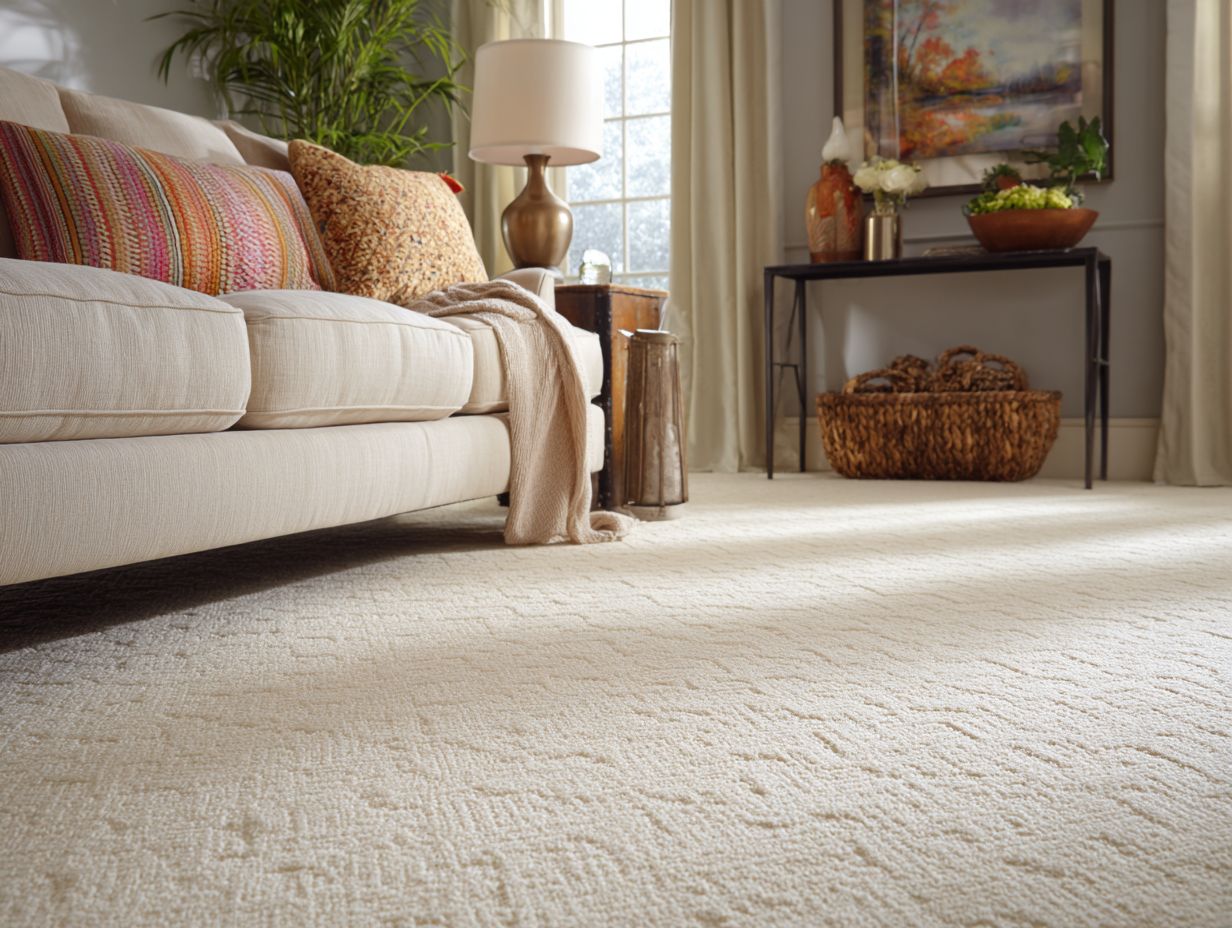
Deciding between professional installation and DIY depends on the complexity of the flooring type and the skill level of the installer.
For simple laminate or vinyl flooring, many homeowners opt for DIY, saving on labor costs that typically range from $6 to $10 per square foot.
For example, installing laminate flooring requires just a few tools, such as a saw and a measuring tape, allowing a regular DIY fan to do it.
If you are considering more complicated options like hardwood or detailed tile patterns, it is often best to hire professionals, especially if you do not know much about installation techniques.
Notably, while the DIY method can cost $2 to $4 per square foot for materials, erroneous installation can lead to expensive repairs later.
Regular Cleaning Practices
Regular cleaning keeps the flooring’s slip-resistant features working well over time.
To keep your floors from being slippery, make a cleaning checklist specific to your type of flooring.
- For tile and vinyl, use a pH-neutral cleaner like Bona (around $15) combined with a microfiber mop for effective dirt removal.
- For hardwood floors, stick to products like Murphy’s Oil Soap (approximately $10) and avoid excess water, as it can create slippery spots.
- Carpets need a complete cleaning every six months with a steam cleaner, such as the Bissell ProHeat 2X (around $200), which helps get rid of allergens.
Always follow up with a thorough drying to maximize safety.
Periodic Inspections and Repairs
Regular checks and quick fixes help keep slip-resistant floors in good condition and avoid risks.
To keep things safe, check vinyl, tile, and laminate floors twice a year.
For vinyl, check for tears or bubbles; for tile, look for cracked or loose pieces; and for laminate, watch for warping or peeling edges.
After inspections, schedule repairs immediately. Use tools like a flooring leveler for minor issues or professional services for extensive damage.
Set up a maintenance plan that involves frequent cleaning with suitable products to keep the surface from becoming slippery and make it last longer.
Final Thoughts on Safety First
Putting safety first can greatly improve life for older adults, decreasing the chances of injuries from slipping and falling.
One practical step is to prioritize slip-resistant flooring materials during home renovations.
Consider options like vinyl, rubber, or textured ceramic tiles. Vinyl floors usually have a slip-resistant surface and are simple to clean, which makes them perfect for kitchens and bathrooms.
Applying anti-slip coatings to existing tiles can provide an effective quick fix. Don’t forget to install grab bars in key areas like showers and stairways to further prevent falls.
For further guidance, consult a local home improvement expert to tailor these solutions to your space.
Frequently Asked Questions
What is the importance of slip-resistant flooring for seniors?
Flooring that prevents slipping is important for seniors’ safety because it reduces the chances of falling and getting hurt. As we get older, our ability to stay steady and move easily can lessen, increasing our chances of slipping on slick or wet floors. Slip-resistant flooring provides a textured surface for better traction and stability, reducing the risk of accidents for seniors.
What types of flooring are considered slip-resistant for seniors?
There are various types of slip-resistant flooring options for seniors, such as textured vinyl, rubber, cork, and carpet. These materials provide better grip and traction, making them perfect for places where seniors might slip more easily, like bathrooms, kitchens, and entryways.
Is slip-resistant flooring only suitable for seniors or can it benefit all age groups?
While slip-resistant flooring is beneficial for seniors, it can also benefit people of all ages. Accidents from slipping and falling can happen to anyone, and slip-resistant flooring can help prevent these accidents. This safety feature is helpful for everyone in the family, including seniors.
Are there any maintenance or special care requirements for slip-resistant flooring?
Slip-resistant flooring does not require any additional maintenance or special care. Regular cleaning and upkeep, as with any other flooring material, is all that is needed to maintain its slip-resistant properties. To prevent slips, keep the surface dry and clear of debris.
Can I mix and match slip-resistant flooring with my existing flooring?
Yes, you can mix and match slip-resistant flooring with your existing flooring. You can use slip-resistant materials in specific areas of your home, such as bathrooms and kitchens, while keeping your preferred flooring in other areas. This allows you to maintain the look and style of your home while ensuring the safety of seniors in high-risk areas.
Is slip-resistant flooring expensive compared to traditional flooring options?
The cost of slip-resistant flooring may vary depending on the material and installation. However, it does not cost much more than regular flooring choices. Given the extra safety it offers for seniors, spending money on slip-resistant flooring is a good decision.
